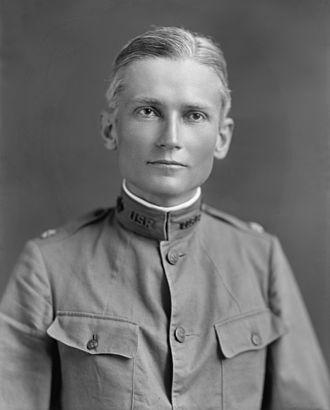Hiram Bingham III

Hiram Bingham III (November 19, 1875 – June 6, 1956) was an American academic, explorer, and politician. He made public the existence of the Inca citadel of Machu Picchu in 1911 with the guidance of local indigenous farmers. Later, Bingham served as Governor of Connecticut for a single day, the shortest term in history, and then as a member of the United States Senate.
Bingham was born in Honolulu, Hawaii, the son of Clara Brewster and Hiram Bingham II (1831–1908), an early Protestant missionary to the Kingdom of Hawai’i, the grandson of Hiram Bingham I (1789–1869) and Sybil Moseley Bingham (1792-1848), earlier missionaries. He attended O’ahu College, now known as Punahou School, from 1882 to 1892. He went to the United States in his teens in order to complete his education, entering Phillips Academy in Andover, Massachusetts, from which he graduated in 1894. He earned a B.A. degree from Yale College in 1898, a degree from the University of California, Berkeley in 1900, where he took one of the first courses on Latin American history offered in the United States, and Ph. D. from Harvard University in 1905. Since Harvard at the time did not have a specialist in Latin American history, Edward Gaylord Bourne of Yale served as the examiner for Bingham’s qualifying exams.[2] While at Yale, Bingham was a member of Acacia fraternity. He taught history and politics at Harvard and then served as preceptor under Woodrow Wilson at Princeton University. Princeton “did not much favor Latin American history,” so in 1907, when Yale sought a replacement for Bourne, who had died an early death, it appointed Bingham as a lecturer in South American history.[3] Bingham was one of the pioneers of teaching and research on Latin American history in the U.S. In 1908, he published an assessment of the field’s prospects, “The Possibilities of South American History and Politics as a Field for Research,” in which he surveyed library and archival resources in the U.S. as well as in South America.[4] From 1924, he was a member of the Acorn Club.
Bingham was not a trained archaeologist. Yet it was during Bingham’s time as a lecturer and professor in South American history at Yale that he rediscovered the largely forgotten Inca city of Machu Picchu. In 1908 he had served as a delegate to the First Pan American Scientific Congress at Santiago, Chile. On his way home via Peru, a local prefect convinced him to visit the pre-Columbian city of Choquequirao. Bingham published an account of this trip in Across South America; an account of a journey from Buenos Aires to Lima by way of Potosí, with notes on Brazil, Argentina, Bolivia, Chile, and Peru.[5]
Bingham was thrilled by the prospect of unexplored Inca cities, and organized the 1911 Yale Peruvian Expedition,[6] one of the objectives of which was to search for the last capital of the Incas. Guided by locals, he rediscovered and correctly identified both Vitcos (then called Rosaspata) and Vilcabamba (then called Espíritu Pampa), which he named “Eromboni Pampa”,[6] but did not correctly recognize Vilcabamba as the last capital, instead continuing onward and misidentifying Machu Picchu as the “Lost City of the Incas”. Decades later, Bingham’s oversight was rectified by the Andean explorer Vince Lee, whose detailed researches proved that Vilcabamba was indeed the Incas’ last capital.
